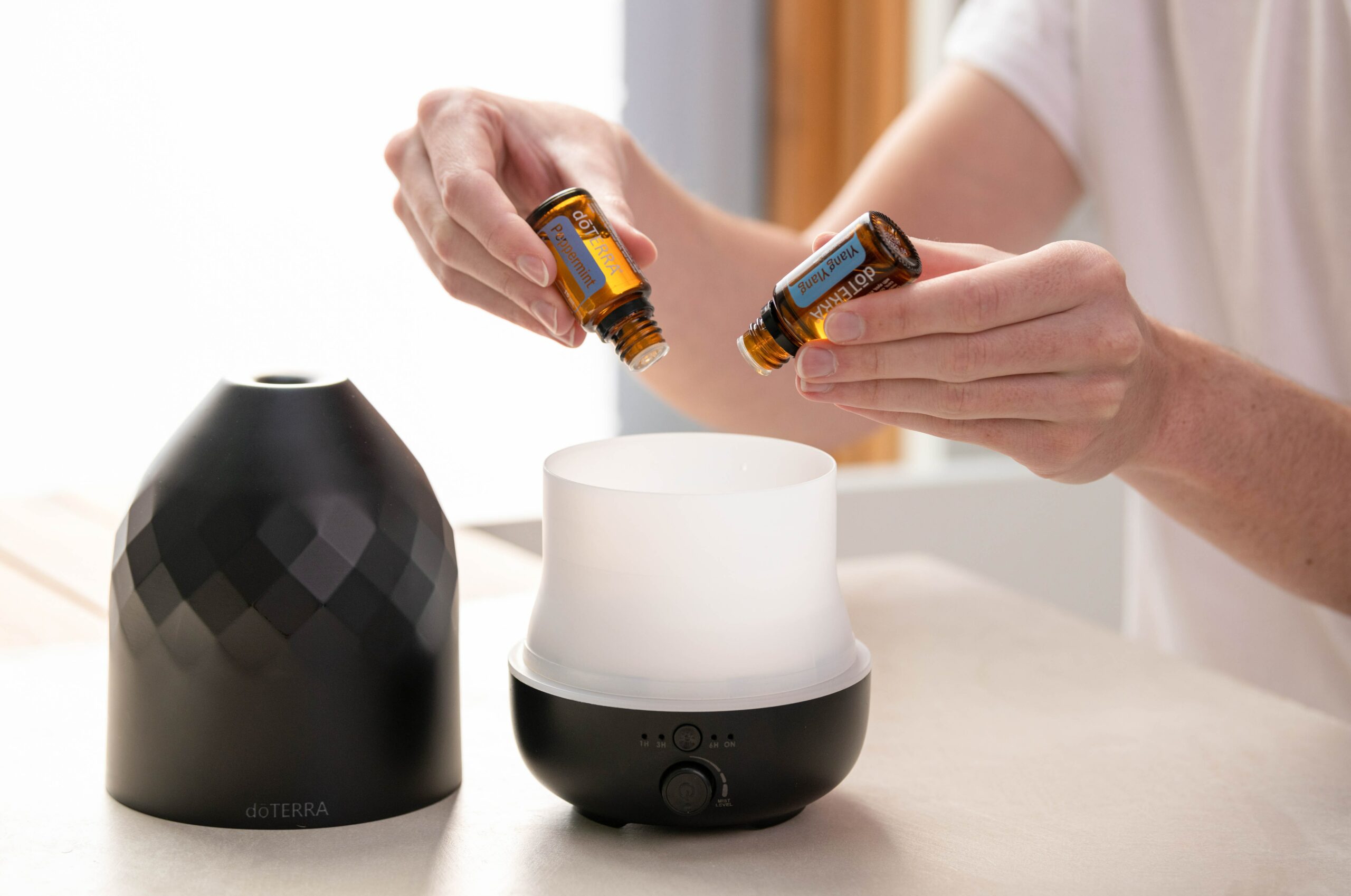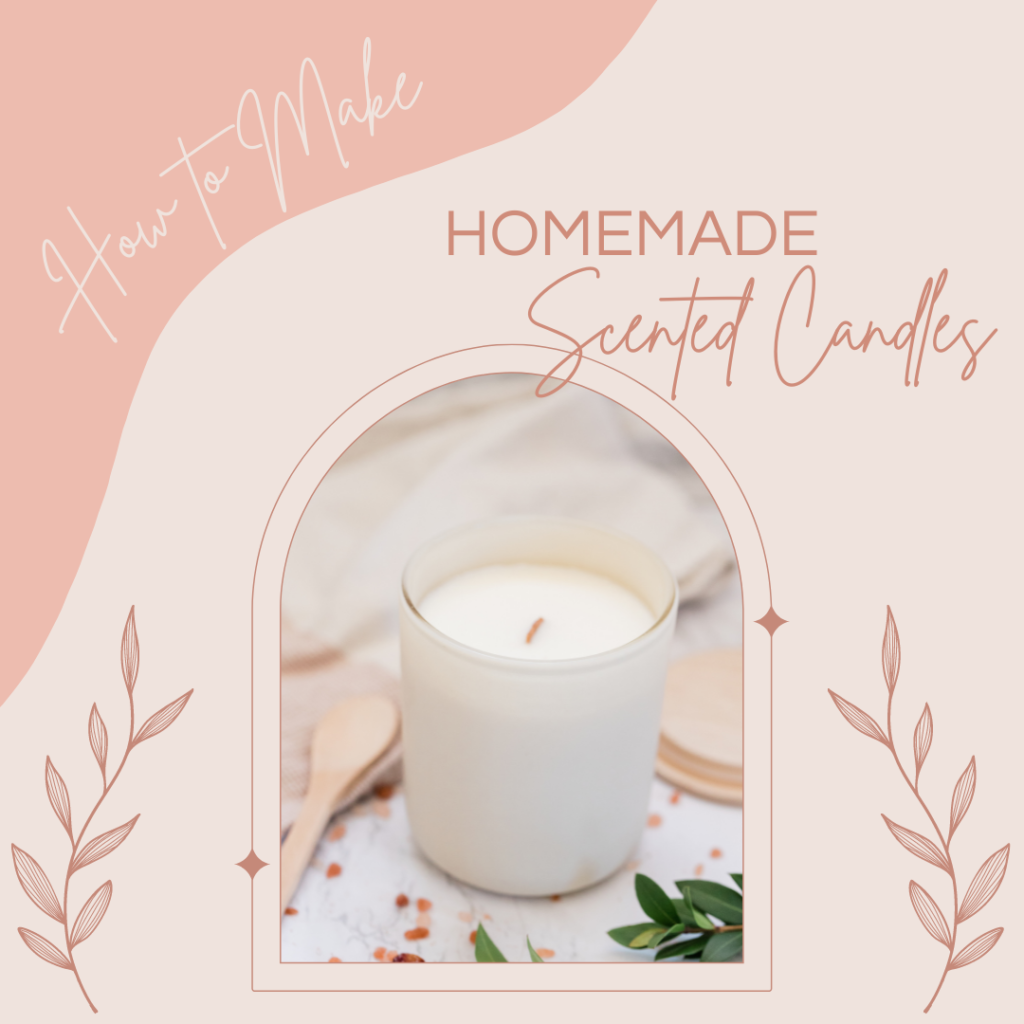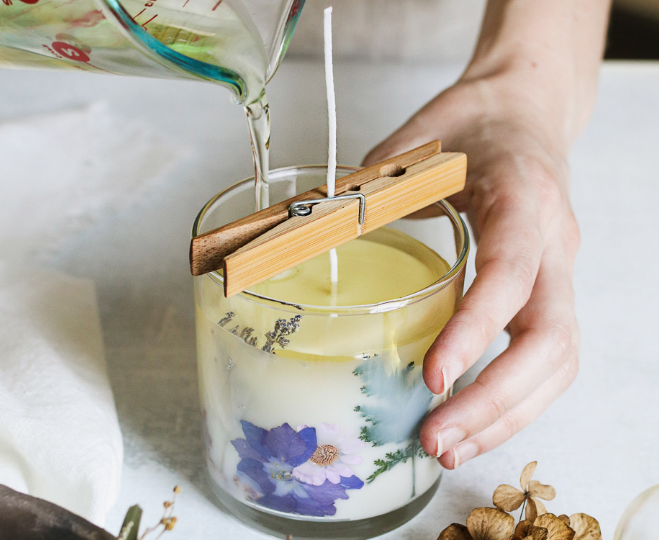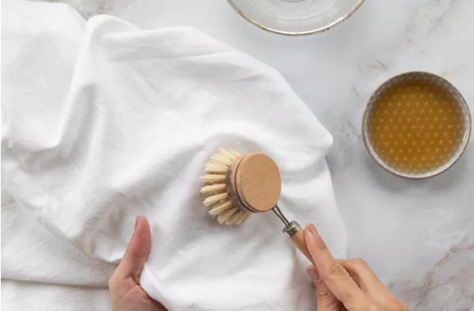How To Add Fragrance To Candles?(8 Excellent Ways)
If you’ve got a bunch of candles in your house, it’s probably time to replenish the supply. But how do you know if your candles are too scented?
The smell of a candle can vary from one person to another (to some extent), but if your home smells like a perfume factory, there’s probably something wrong with what you’re using as an essential oil or fragrance oil source.
In this post, I’ll share some easy ways to add fragrance oils and other aromas to your candle production line without breaking the bank or taking up too much space on your countertop.

#1 Oil or Solvent
One of the easiest ways to add fragrance is by adding oil or solvent. This can be done at any stage of the candle-making process, including before pouring into the mold, during cooling, and/or after it has been burned.
Oil or solvent can be added to the wax before it’s poured into a mold, during cooling, or after burning.
#2 Potpourri
Potpourri is a mixture of dried flowers, leaves, seeds, and spices that can be used to add fragrance to candles. Unlike essential oils, which are concentrated plant extracts distilled from the plant itself or its parts (leaves, bark, or roots), potpourri is a mixture bound together by heat and pressure.
Potpourri isn’t a substitute for essential oils—it’s just another way to amp up your candle’s scent! You can find potpourri in many different scents such as lavender or vanilla.
#3 Fragrance Oils
Fragrance oils are liquid fragrance concentrates that you can use in wax formulations to create scents. They’re often sold at craft stores and online, but they’re also available in most drugstores and grocery stores.
There are several different types of fragrance oils: solid (which is usually clear or has a slight tint), semi-solid (like the kind you get from your local pharmacy), or liquid (which comes as an opaque liquid). The type you choose depends on what kind of candles you want to make—and whether or not it’s legal to do so where you live!
Fragrance oils come with their proprietary recipe—which means they won’t work as well with other brands’ candles as they would work with yours! So make sure that whatever scent combination works best for your project is included on its label when shopping around town later down the line…
#4 Artificial Aromas
Artificial aromas are the cheapest and easiest way to add fragrance to candles. They can be found in stores like Target, Walgreens, or even your local grocery store. The smell of these artificial scents does not last as long as real flowers do—and they won’t smell as good either!
You can also use artificial aromas to create candles that smell like food or flowers instead of just one specific scent.
#5 Herbs and Spices
You can add herbs and spices to your candle, which will give it a unique scent. There are many ways in which you can use herbs and spices:
- Sprinkle them on top of the candle when you’re pouring it into its container.
- Add them as part of a herbal mixture that’s added to the wax before pouring it into a mold or container. This gives your candle both visual appeal and a great aroma!
#6 Floral Materials
- Floral materials such as rose petals, lavender, and jasmine are great additions to candles. These materials are not always easy to find, but you can buy them online or grow your own.
- Fragrant essential oils, such as lemon oil or bergamot essential oil (which is an essential oil derived from the plant bergamot), will add fragrance when added directly into the wax before it’s poured into molds for casting candles.

#7 Essential Oils
Essential oils are plant extracts that contain the fragrant compounds found in plants. They’re highly concentrated and therefore have a strong scent, which is why they can be used in candles.
Essential oils are also expensive, so it may not make sense to add them to your candle if you aren’t going to make some money off them (and if you do, I’m sorry). But you can use essential oils for other things! You can use them as a natural cleaner or even as a moisturizer—it’s all up to you!
#8 Perfume Oils
Perfume oils are a concentrated form of fragrance that can be added to candles for added scent and strength. They’re also ideal for wax melts, tarts, and cubes because they don’t have the same limitations as essential oils—they’re purer, more powerful scents that will fill your home with the perfect aroma.
If you’re looking to add perfume oil into your candle-making process (or if you just want them on their own), consider using these tips:
- Add two drops at a time until the desired level is reached.* To test whether or not your mixture has been diluted enough: place some wicking material over each drop and ignite it with a match.* Let burn out before adding another drop.* The longer it burns, the stronger its scent will become.* If there’s any leftover after three hours, dispose of it immediately because it could cause fires when burned!
| Common Fragrance Notes | |
| Aromatic: | eucalyptus, lavender, rosemary, sage, thyme |
| Citrus: | lemon, orange, lime, bergamot, grapefruit, mandarin |
| Water: | ocean, rain, dew, ozone |
| Green: | grass, leaves, bamboo, green tea, cilantro, herbs, mint, tomato leaf |
| Fruity: | cucumber, pear, apple, cranberry, pumpkin, coconut, almond |
You can add fragrance to candles, but not all fragrances are right for candles
If you want your candle to smell like vanilla and flowers, for example, your best option is essential oils or perfume.
Artificial aromas such as those found in air fresheners are not recommended since they tend to have a synthetic scent that doesn’t last long on the candle itself. Other fragrances—including food-based ones—may make your candle smell funny if they get into the wax too much during production; however, there are some exceptions where this isn’t a problem (e.g., apple pie).
The best way I’ve found so far is by using different combinations of oils: one with an aroma that’s stronger than others (like lavender), another with more subtle notes (like lemon oil), and then adding just enough other ingredients like florals or fruit essences so everything blends together nicely!
Why Should You Add Fragrance to Candles?
1. Fragrance heightens the mood
Have you ever noticed that when you walk into a room and smell something great, it makes your mood immediately brighten? That’s because scent affects our perception of the world around us, changing how we feel about everything from our surroundings to other people in our lives.
2. It feels good to breathe in a scent you love
The fragrance is a simple way to make your home feel fresh and clean. It can also be used as a signature scent for your home, so you don’t have to worry about lighting candles every night. Instead, just fill up the room with your favorite fragrance and let it breathe!
You don’t need any special equipment—just some well-loved candles will do the trick. And if you’re not sure which ones to pick out? We’ve got some suggestions below!

3. It’s a quick way to make your home feel fresh and clean
If you’re looking for a quick way to make your home feel fresher, more inviting, and more relaxing, candles are the way to go. Candles have been used since ancient times as a natural remedy for relaxation and stress relief.
They can help you fall asleep faster, wake up feeling refreshed in the morning, and even boost your immune system by creating an air of pleasantness around them (you’ll be surprised at how much better everything looks).
4. A good candle can become a signature scent for your home
Candles are a great way to add fragrance to your home. The scent of a candle can bring back memories and create a unique atmosphere for each room in your home. You can also use them as focal points in certain areas of the house, like the living room or kitchen, so that guests always know what it smells like when they walk into those rooms.
Candles can also be used in different ways throughout the day—for example: if you need some inspiration for dinner tonight but don’t know where to find it (or if there’s an emergency), just light one up!
Conclusion
You can add fragrance to candles, but not all fragrances are right for candles. It depends on the type of candle and what you want your fragrance to do. For example, adding essential oils to a candle can make it more potent with certain essential oils acting as a catalyst in creating aromas that aren’t normally present in nature such as cedar wood or lemon peel.
However, these same scents may not be suitable for use on your skin if they’re too strong or overpowering because people will likely experience headaches from using too much at once!
How to Add Scent to a Candle: Basic Candle Making






